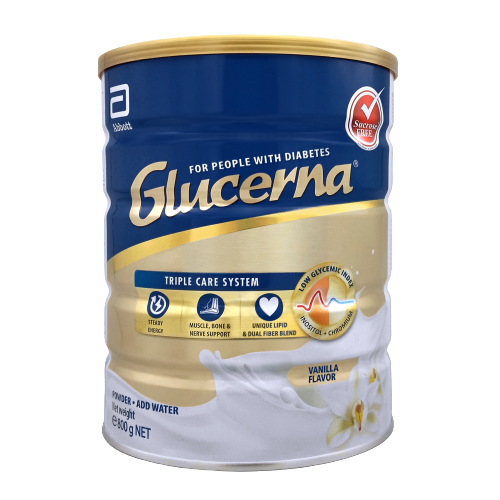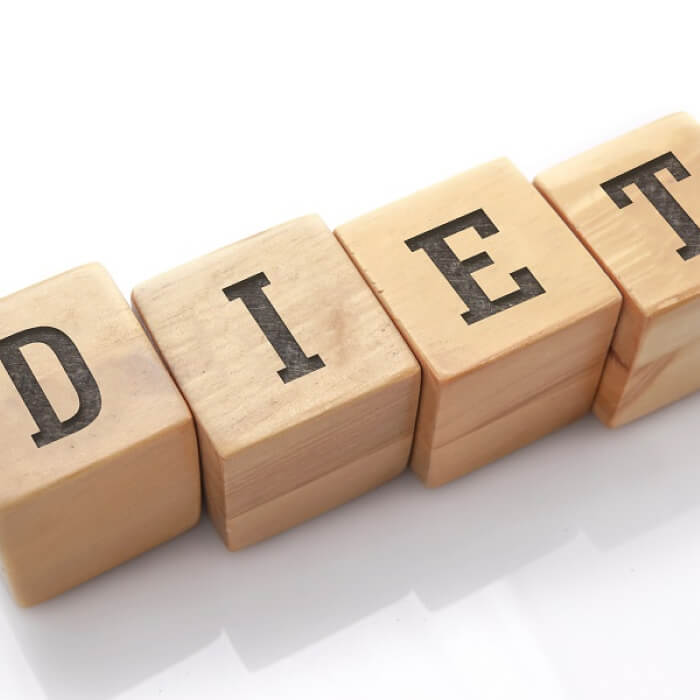Glucerna triple care
- Main Image
-

- Subtitle
- Complete and Balanced Nutrition For People with Diabetes
- Title
- Glucerna® Triple Care
- Detail Page Path
Living with diabetes can sometimes lead to ‘diabetes burnout’.¹ A state of emotional or physical exhaustion caused by feeling overwhelmed and frustrated by the daily burden of self care.
Abbott partnered with Diabetes Singapore to better understand the struggles of living with Type 2 diabetes to help individuals ease the stress. Using a validated tool² to study diabetes burnout, the survey found:
Keeping blood sugar on track can be challenging. Empower yourself to make better food choices everyday.
Knowledge is power
Learn about your diet from your dietitian or doctor instead of trusting hearsay or the latest fad diet. Learn to swap food choices and still stay in control.
Know your servings
When eating at home, use a standard 9 inch plate to control food portions. When eating out, use your hand to estimate food portions.³
Take a break from meal planning
Use portion controlled ready-to-eat low Glycemic Index (GI) meals, or diabetes-specific nutritional supplements* to replace a meal or a snack, or as supplement to a meal.4,5,6
Whether you choose to eat out or shop for groceries, looking out for the healthier choice is simple. Choose nutrient rich foods such as: lean protein, wholegrain carbohydrates, non-starchy vegetables and fresh fruit. Select foods in the supermarket with HPB’s Healthier Choice Symbol.
Shopping for healthier food:
Eating out:
Successful diabetes care requires teamwork between you and your physician, communicating effectively, and making decisions together.
Attending regular check-ups can cause anxiety, but be assured that your doctor is here to help. Don’t be afraid to speak about your feelings, including dietary concerns. Prepare your questions before your appointment, to ensure time is well spent with your doctor.
Your family, friends and co-workers want to offer support and help you stay motivated. Engaging in open dialogue can decrease interpersonal distress and help keep diabetes under control. You can talk to your friends and family about diabetes. Share your need for portion controlled healthy food choices. Ask for help to buy and prepare healthier meals. Join a support group to share with other individuals with similar challenges.
Find out more about the survey:
All the effort required by people managing diabetes can sometimes lead to ‘diabetes burnout’ – a state of emotional and physical exhaustion caused by feeling overwhelmed and frustrated by the burden of diabetes self-management tasks. To provide support for diabetes patients, Abbott partnered with Diabetes Singapore to conduct a survey that aimed to better understand the struggles of those living with Type 2 diabetes and to find solutions to empower them.
*Consult your healthcare professional for further advice on meal planning including the use of these convenient choices as part of your individualised diet plan.
References:
1 Avoid Diabetes Burnout. Join Diabetes centre. Retrieved 16 September 2019, from: https://www.joslin.org/info/avoid_diabetes_burnout.html
2 Chin YW, Lai PSM, Chia YC. The validity and reliability of the English version of the diabetes distress scale for Type 2 diabetes patients in Malaysia. BMC Family Practice. 2017;15:25
3 How to Measure Food Portions. ARNG Guard Your Health. (2019). Retrieved 13 September 2019.
4 Stenvers, D., Schouten, L., Jurgens, J., Endert, E., Kalsbeek, A., Fliers, E., & Bisschop, P. 2014. Breakfast replacement with a low-glycemic response liquid formula in patients with Type 2 diabetes: a randomised clinical trial. British Journal Of Nutrition, 112(4), 504-512. Doi: 10.1017/s0007114514001123
5 Devitt, A., Oliver, J., Hegazi, R., & Mustad, V., 2012. Glycemia Targeted Specialized Nutrition (GTSN) improves postprandial glycaemic and GLP-1 with similar appetitive responses compared to a healthful whole food breakfast in persons with Type 2 diabetes: a randomized, controlled trial. Journal of diabetes research and clinical metabolism, 1(1), 20. Doi: 10.7243/2050-0866-1-20
6 Chee, W., Gilcharan Signh, H., Hamndy, O., Mechanick, J., Lee, V., & Barua, A., et al 2017. Structured lifestyle intervention based on a trans-cultural diabetes specific nutrition algorithm (tDNA) in individuals with Type 2 diabetes: a randomised controlled trial. BMJ Open Diabetes Research & care, F(1). e000384. Doi: 10.1136/bmjdrc-2016-000384
SG.2022.29988.GLU.1 (V1.1)

Unlike the flu or an episode of fever, diabetes does not go away. Every food choice matters. Learn about mindful eating to be prepared for the long run.

Your every food choice matters. With the food environment around you evolving daily, are you still getting your diet foundation right?

Fluctuations in blood glucose levels may contribute to fatigue in people with diabetes. Find out what you can do to help maintain steady energy through the day.
You are about to exit for another Abbott country or region specific website.
Please be aware that the website you have requested is intended for the residents of a particular country or region, as noted on that site. As a result, the site may contain information on pharmaceuticals, medical devices and other products or uses of those products that are not approved in other countries or regions.
The website you have requested also may not be optimized for your specific screen size.
Do you wish to continue and exit this website?